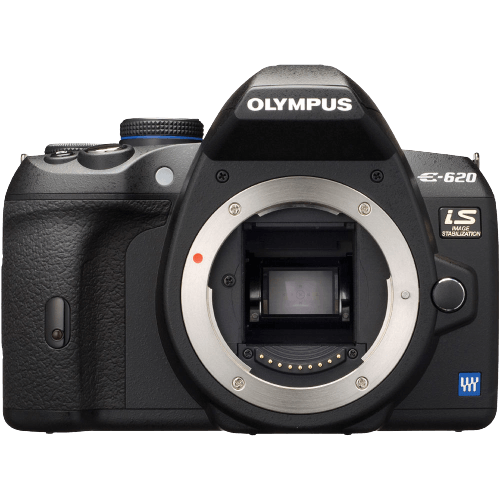Olympus E620 Specs and Scores

The Olympus E620 receives a score of 42/100 for its general specifications. Launched in 2009 at a price of $618, this DSLR camera measures 130 x 94 x 60mm and weighs 500g (1.10lbs). In today’s market, these specifications may not be as impressive as newer models, but the E620 still retains its value for those who appreciate a compact and lightweight DSLR. This camera, despite its age, offers solid performance and reliability to users.
Olympus E620 Overview and Optics
The Olympus E620 receives a score of 43/100 for its optics. This camera features a 12.3-megapixel Live MOS sensor, a TruePic III+ processor, and a Micro Four Thirds sensor size. The shooting speed is 4 frames per second, and it has image stabilization capabilities. The lens mount is Micro 4/3, and the aspect ratio is 4:3. Its DXOMARK score for the sensor is 55.
Considering current market standards, the Olympus E620’s optics are not exceptional. The 12.3-megapixel sensor is lower in resolution compared to many modern cameras, and the 4 frames per second shooting speed is slower than most. The Micro Four Thirds sensor size is smaller than the popular APS-C and full-frame sensors, which can limit image quality and low-light performance.
The Olympus E620’s optics are not outstanding compared to today’s cameras. Its lower megapixel count, slower shooting speed, and smaller sensor size make it less competitive in the current market. However, it does offer image stabilization and a Micro 4/3 lens mount, which may still appeal to some users.
Olympus E620 Video Performance
The Olympus E620 lacks video capabilities. This camera focuses on photography, not video recording.
Olympus E620 Features and Benefits
The Olympus E620 receives a feature score of 34 out of 100. With a screen size of 2.7 inches and a resolution of 230,000 dots, the E620 lacks a touchscreen, GPS, WiFi, and Bluetooth capabilities. However, it does possess a flip screen, which adds versatility to its usability.
Comparing the E620 to other cameras in today’s market, it falls behind in terms of advanced features. Many modern cameras offer touchscreens, GPS, WiFi, and Bluetooth connectivity, which enhance user experience and functionality.
Despite its low feature score, the Olympus E620 still provides reliable performance and quality. Its flip screen offers flexibility in capturing unique angles, making it a viable option for photographers who prioritize simplicity and ease of use.
Olympus E620 Storage and Battery
The Olympus E620 storage and battery receive a score of 60/100. The camera possesses two memory card slots, accommodating Compact Flash (Type I or II) and xD Picture Cards. These memory card types, while functional, are dated compared to the more common SD cards found in modern cameras.
The E620’s battery life lasts for 500 shots, powered by a BLS-1 battery. This battery life is adequate for casual photography but may fall short for extended shooting sessions or professional use. Additionally, the camera lacks USB charging capabilities, limiting charging options to a dedicated battery charger.
Considering the storage and battery specifications, the Olympus E620 performs modestly in today’s market. Its memory card compatibility and battery life are satisfactory for casual users but may not meet the demands of more advanced photographers.
